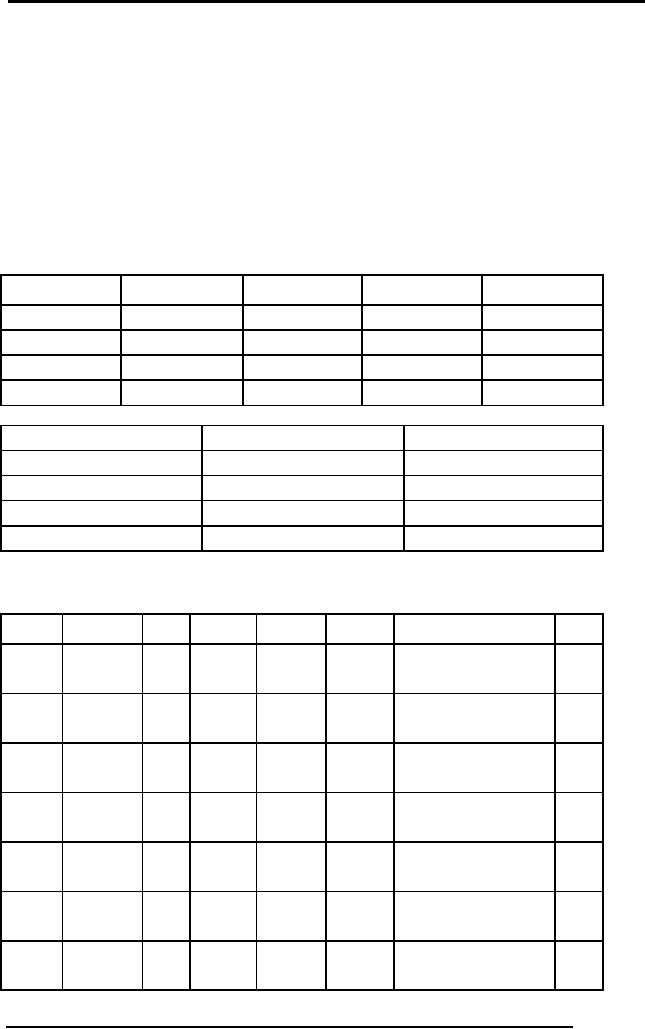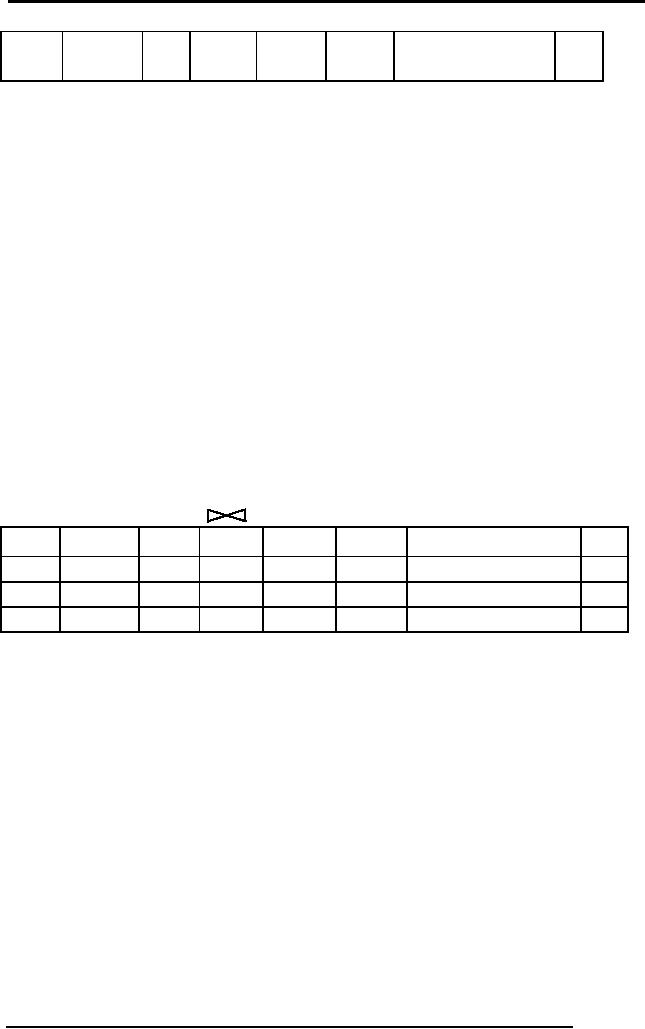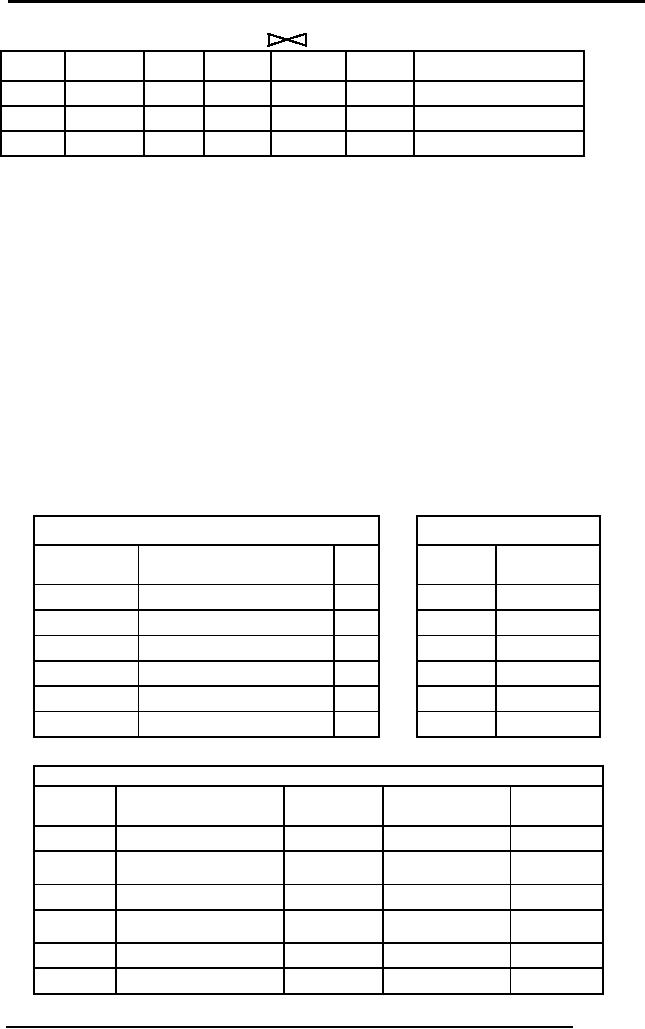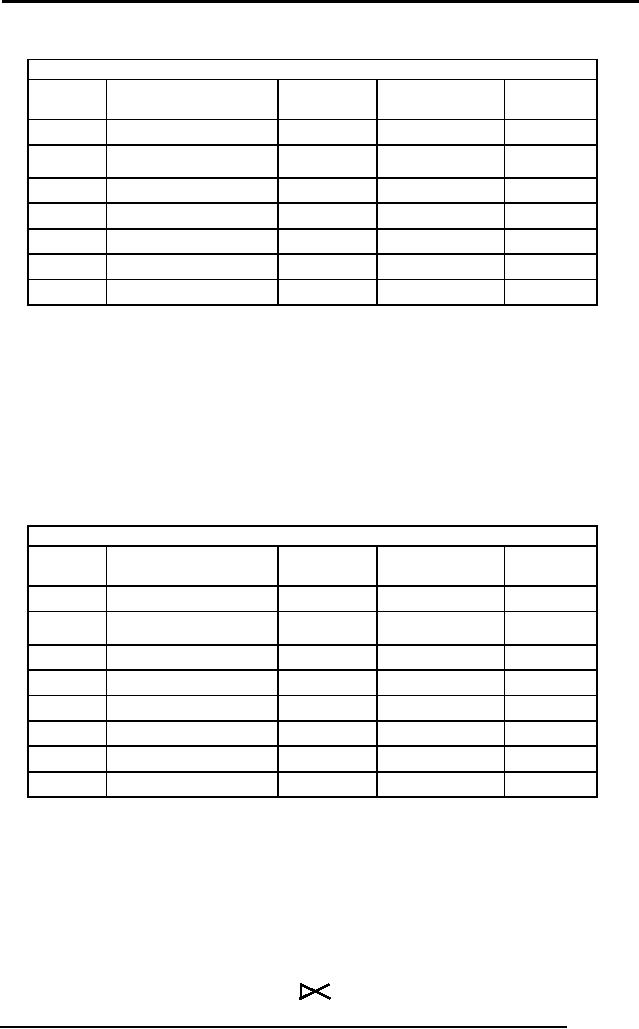 |
Types of Joins: Theta Join, Equi–Join, Natural Join, Outer Join, Semi Join |
| << The Project Operator |
| Functional Dependency, Inference Rules, Normal Forms >> |

Database
Management System
(CS403)
VU
Lecture No.
18
Reading
Material
"Database
Systems Principles, Design
and Implementation"
Section
6.6.1 6.6.3
written
by Catherine Ricardo, Maxwell
Macmillan.
Overview of Lecture:
o Types of
Joins
o Relational
Calculus
o Normalization
In the
previous lecture we have
studied the basic operators of relational
algebra along
with
different examples. From
this lecture we will study
the different types of
joins,
which
are very important and
are used extensively in
relational calculus.
Types of
Joins
Join is a
special form of cross
product of two tables. It is a
binary operation that
allows
combining certain selections and a
Cartesian product into one
operation. The
join
operation forms a Cartesian
product of its two arguments,
performs a selection
forcing
equality on those attributes that appear
in both relation schemas,
and finally
removes
duplicate attributes. Following
are the different types of
joins: -
1. Theta
Join
2. Equi
Join
3. Semi
Join
4.
Natural Join
5. Outer
Joins
We will
now discuss them one by
one
Theta
Join:
In theta
join we apply the condition
on input relation(s) and
then only those selected
rows
are used in the cross
product to be merged and
included in the output. It
means
that in
normal cross product all
the rows of one relation
are mapped/merged with
all
the
rows of second relation, but
here only selected rows of a relation are
made cross
product
with second relation. It is
denoted as under: -
RX S
157

Database
Management System
(CS403)
VU
If R and
S are two relations then is
the condition, which is
applied for select
operation
on one relation and then
only selected rows are cross
product with all
the
rows of
second relation. For Example
there are two relations of
FACULTY and
COURSE,
now we will first apply select
operation on the FACULTY relation
for
selection
certain specific rows then
these rows will have
across product with
COURSE
relation, so this is the
difference in between cross
product and theta
join.
We will
now see first both
the relation their different
attributes and then finally
the
cross
product after carrying out
select operation on relation.
From
this example the difference
in between cross product and
theta join becomes
clear.
FACULTY
facId
facName
dept
salary
rank
F234
Usman
CSE
21000
lecturer
F235
Tahir
CSE
23000
Asso
Prof
F236
Ayesha
ENG
27000
Asso
Prof
F237
Samad
ENG
32000
Professor
COURSE
crCode
crTitle
fId
C3456
Database
Systems
F234
C3457
Financial
Management
C3458
Money
& Capital Market
F236
C3459
Introduction
to Accounting
F237
(σ rank = `Asso
Prof'(FACULTY)) X COURSE
facName
dept salary
rank
crCode
crTitle
fId
facId
F235
Tahir
CSE
23000
Asso
C3456
Database
Systems
F234
Prof
F235
Tahir
CSE
23000
Asso
C3457
Financial
Management
Prof
F235
Tahir
CSE
23000
Asso
C3458
Money
& Capital Market
F236
Prof
F235
Tahir
CSE
23000
Asso
C3459
Introduction
to
F237
Prof
Accounting
F236
Ayesha
ENG
27000
Asso
C3456
Database
Systems
F234
Prof
F236
Ayesha
ENG
27000
Asso
C3457
Financial
Management
Prof
F236
Ayesha
ENG
27000
Asso
C3458
Money
& Capital Market
F236
Prof
158

Database
Management System
(CS403)
VU
F236
Ayesha
ENG
27000
Asso
C3459
Introduction
to
F237
Prof
Accounting
Fig. 1:
Two tables with an example
of theta join
In this
example after fulfilling the
select condition of Associate professor
on faculty relation
then it
is cross product with course
relation
EquiJoin:
This is
the most used type of join.
In equijoin rows are
joined on the basis of
values
of a
common attribute between the
two relations. It means
relations are joined on
the
basis of
common attributes between
them; which are meaningful.
This means on the
basis of
primary key, which is a
foreign key in another
relation. Rows having
the
same
value in the common
attributes are joined.
Common attributes appear twice
in
the
output. It means that the
attributes, which are common in
both relations, appear
twice,
but only those rows, which
are selected. Common attribute
with the same
name
is
qualified with the relation
name in the output. It means
that if primary and
foreign
keys of
two relations are having
the same names and if we
take the equi join of
both
then in
the output relation the
relation name will precede
the attribute name.
For
Example,
if we take the equi
join of faculty and course
relations then the
output
would be
as under: -
FACULTY..facId=COURSE.fId
COURSE
FACULTY
facId
facName dept
salary
rank
crCode
crTitle
fID
F234
Usman
CSE
21000
lecturer
C3456
Database
Systems
F234
F236
Ayesha
ENG
27000
Asso
Prof
C3458
Money
& Capital Market
F236
F237
Samad
ENG
32000
Professor
C3459
Introduction
to Accounting
F237
Fig. 2:
Equi-join on tables of figure
1
In the
above example the name of
common attribute between the
two tables is
different,
that is, it is facId in FACULTY
and fId in COURSE, so it is not
required to
qualify;
however there is no harm
doing it still. Now in this
example after taking
equijoin
only those tuples are selected in
the output whose values are
common in
both
the relations.
Natural
Join:
This is
the most common and general
form of join. If we simply say
join, it means the
natural
join. It is same as equijoin
but the difference is that
in natural join, the
common
attribute appears only once.
Now, it does not matter
which common
attribute
should be
part of the output relation
as the values in both are
same. For Example if
we
take
the natural join of faculty
and course the output
would be as under: -
159

Database
Management System
(CS403)
VU
FACULTY
facId,
fId COURSE
facId
facName
dept
salary
rank
crCode
crTitle
F234
Usman
CSE
21000
Lecturer
C3456
Database
Systems
F236
Ayesha
ENG
27000
Asso
Prof
C3458
Money
& Capital Market
F237
Samad
ENG
32000
Professor
C3459
Introduction
to Accounting
Fig. 4:
Natural join of FACULTY and COURSE
tables of figure 1
In this
example the common attribute
appears only once, rest the
behavior is same.
Following
are the different types of
natural join:-
Left
Outer Join:
In left
outer join all the
tuples of left relation
remain part of the output.
The tuples that
have a
matching tuple in the second
relation do have the
corresponding tuple from
the
second
relation. However, for the
tuples of the left relation,
which do not have a
matching
record in the right tuple
have Null values against
the attributes of the
right
relation.
The example is given in
figure 5 below. It can be
described in another
way.
Left
outer join is the equi-join
plus the non matching
rows of the left side
relation
having
Null against the attributes
of right side
relation.
Right
Outer Join:
In right
outer join all the
tuples of right relation
remain part of the output
relation,
whereas
on the left side the
tuples, which do not match
with the right relation,
are left
as null.
It means that right outer
join will always have all
the tuples of right
relation
and those
tuples of left relation
which are not matched are
left as Null.
COURSE
STUDENT
stId
bkId
bkTitile
stId
stName
B10001
Intro to
Database Systems
S104
S101
Ali
Tahir
B10002
Programming
Fundamentals
S101
S103
Farah
Hasan
B10003
Intro
Data Structures
S101
S104
Farah
Naz
B10004
Modern
Operating Systems
S103
S106
Asmat
Dar
B10005
Computer
Architecture
S107
Liaqat
Ali
B10006
Advanced
Networks
S104
COURSE
left outer join
STUDENT
bkId
bkTitile
BOOK.stId
STUDENT.stId
stName
B10001
Intro to
Database Systems
S104
S104
Farah
Naz
B10002
Programming
S101
S101
Ali
Tahir
Fundamentals
B10003
Intro
Data Structures
S101
S101
Ali
Tahir
B10004
Modern
Operating
S103
S103
Farah
Hasan
Systems
B10006
Advanced
Networks
S104
S104
Farah
Naz
B10005
Computer
Architecture
Null
Null
Null
160

Database
Management System
(CS403)
VU
COURSE
right outer join
STUDENT
bkId
bkTitile
BOOK.stId
STUDENT.stId
stName
B10001
Intro to
Database Systems
S104
S104
Farah
Naz
B10002
Programming
S101
S101
Ali
Tahir
Fundamentals
B10003
Intro
Data Structures
S101
S101
Ali
Tahir
B10004
Modern
Operating Systems
S103
S103
Farah
Hasan
B10006
Advanced
Networks
S104
S104
Farah
Naz
Null
Null
Null
S106
Asmat
Dar
Null
Null
Null
S107
Liaqat
Ali
Fig. 5:
Input tables and left
outer join and right
outer join
Outer
Join:
In outer
join all the tuples of
left and right relations
are part of the output. It
means
that
all those tuples of left
relation which are not
matched with right relation
are left
as Null.
Similarly all those tuples of
right relation which are
not matched with left
relation
are left as Null.
COURSE
outer join STUDENT
bkId
bkTitile
BOOK.stId
STUDENT.stId
stName
B10001
Intro to
Database Systems
S104
S104
Farah
Naz
B10002
Programming
S101
S101
Ali
Tahir
Fundamentals
B10003
Intro
Data Structures
S101
S101
Ali
Tahir
B10004
Modern
Operating Systems
S103
S103
Farah
Hasan
B10006
Advanced
Networks
S104
S104
Farah
Naz
B10005
Computer
Architecture
Null
Null
Null
Null
Null
Null
S106
Asmat
Dar
Null
Null
Null
S107
Liaqat
Ali
Fig. 6:
outer join operation on
tables of figure 5
Semi
Join:
In semi
join, first we take the
natural join of two
relations then we project
the
attributes
of first table only. So
after join and matching
the common attribute of
both
relations
only attributes of first
relation are projected. For
Example if we take
the
semi join
of two relations faculty and
course then the resulting
relation would be as
under:-
FACULTY
COURSE
161

Database
Management System
(CS403)
VU
facId
facName
Dept
Salary
Rank
F234
Usman
CSE
21000
lecturer
F236
Ayesha
ENG
27000
Asso
Prof
F237
Samad
ENG
32000
Professor
Fig. 7:
Semi-join operation on tables of
figure 1
Now
the resulting relation has
attributes of first relation
only after taking the
natural
join of
both relations.
Relational
Calculus
Relational
Calculus is a nonprocedural formal
relational data manipulation
language
in which
the user simply specifies
what data should be
retrieved, but not how
to
retrieve
it. It is an alternative standard for
relational data manipulation languages.
The
relational
calculus is not related to
the familiar differential
and integral calculus
in
mathematics,
but takes its name from a
branch of symbolic logic
called the predicate
calculus.
It has two following two
forms: -
� Tuple
Oriented Relational
Calculus
�
Domain
Oriented Relational
Calculus
Tuple
Oriented Relational
Calculus:
In tuple
oriented relational calculus we
are interested primarily in
finding relation
tuples
for which a predicate is
true. To do so we need tuple variables. A
tuple variable
is a
variable that takes on only
the tuples of some relation
or relations as its range of
values.
It actually corresponds to a mathematical
domain. We specify the range of
a
tuple
variable by a statement such as:
-
RANGE OF S IS
STUDENT
Here, S
is the tuple variable and
STUDENT is the range, so
that S always represents
a
tuple of
STUDENT. It is expressed as
{S | P
(S)}
We will read it as
find the set of all
tuples S such that P(S) is
true, where P implies
the
predicate
condition now suppose range
of R is STUDENT
{R |
R.Credits > 50}
We will
say like find the
stuId, stuName, majors etc
of all students having more
than
50
credits.
Domain
Oriented Relational
Calculus:
Normalization
There
are four types of anomalies,
which are of concern, redundancy,
insertion,
deletion
and updation. Normalization is
not compulsory, but it is
strongly
162

Database
Management System
(CS403)
VU
recommended
that normalization must be done.
Because normalized design
makes the
maintenance
of database much easier. While
carrying out the process of
normalization,
it should
be applied on each table of
database. It is performed after
the logical
database
design. This process is also
being followed informally
during conceptual
database
design as well.
Normalization
Process
There
are different forms or
levels of normalization. They
are called as first,
second
and so
on. Each normalized form
has certain requirements or
conditions, which must
be
fulfilled. If a table or relation
fulfills any particular form
then it is said to be in
that
normal
form. The process is applied
on each relation of the
database. The minimum
form in
which all the tables
are in is called the normal
form of entire database.
The
main
objective of normalization is to place
the database in highest form
of
normalization.
Summary
In this
lecture we have studied the
different types of joins,
with the help of which
we
can
join different tables. We
can get different types of
outputs from joins. Then
we
studied
relational calculus in which we
briefly touched upon tuple
and domain
oriented
relational calculus. Lastly we started
the process of normalization
which is a
very
important topic and we will
discuss in detail this topic
in the coming
lectures.
Exercise:
Draw
two tables of PROJECT and
EMPLOYEE along with
different attribute,
include
a common
attribute between the two to
implement the PK/FK
relationship and
populate
both the tables. Then
apply all types of joins
and observe the difference
in
the
output relations
163
Table of Contents:
- Introduction to Databases and Traditional File Processing Systems
- Advantages, Cost, Importance, Levels, Users of Database Systems
- Database Architecture: Level, Schema, Model, Conceptual or Logical View:
- Internal or Physical View of Schema, Data Independence, Funct ions of DBMS
- Database Development Process, Tools, Data Flow Diagrams, Types of DFD
- Data Flow Diagram, Data Dictionary, Database Design, Data Model
- Entity-Relationship Data Model, Classification of entity types, Attributes
- Attributes, The Keys
- Relationships:Types of Relationships in databases
- Dependencies, Enhancements in E-R Data Model. Super-type and Subtypes
- Inheritance Is, Super types and Subtypes, Constraints, Completeness Constraint, Disjointness Constraint, Subtype Discriminator
- Steps in the Study of system
- Conceptual, Logical Database Design, Relationships and Cardinalities in between Entities
- Relational Data Model, Mathematical Relations, Database Relations
- Database and Math Relations, Degree of a Relation
- Mapping Relationships, Binary, Unary Relationship, Data Manipulation Languages, Relational Algebra
- The Project Operator
- Types of Joins: Theta Join, Equi–Join, Natural Join, Outer Join, Semi Join
- Functional Dependency, Inference Rules, Normal Forms
- Second, Third Normal Form, Boyce - Codd Normal Form, Higher Normal Forms
- Normalization Summary, Example, Physical Database Design
- Physical Database Design: DESIGNING FIELDS, CODING AND COMPRESSION TECHNIQUES
- Physical Record and De-normalization, Partitioning
- Vertical Partitioning, Replication, MS SQL Server
- Rules of SQL Format, Data Types in SQL Server
- Categories of SQL Commands,
- Alter Table Statement
- Select Statement, Attribute Allias
- Data Manipulation Language
- ORDER BY Clause, Functions in SQL, GROUP BY Clause, HAVING Clause, Cartesian Product
- Inner Join, Outer Join, Semi Join, Self Join, Subquery,
- Application Programs, User Interface, Forms, Tips for User Friendly Interface
- Designing Input Form, Arranging Form, Adding Command Buttons
- Data Storage Concepts, Physical Storage Media, Memory Hierarchy
- File Organizations: Hashing Algorithm, Collision Handling
- Hashing, Hash Functions, Hashed Access Characteristics, Mapping functions, Open addressing
- Index Classification
- Ordered, Dense, Sparse, Multi-Level Indices, Clustered, Non-clustered Indexes
- Views, Data Independence, Security, Vertical and Horizontal Subset of a Table
- Materialized View, Simple Views, Complex View, Dynamic Views
- Updating Multiple Tables, Transaction Management
- Transactions and Schedules, Concurrent Execution, Serializability, Lock-Based Concurrency Control, Deadlocks
- Incremental Log with Deferred, Immediate Updates, Concurrency Control
- Serial Execution, Serializability, Locking, Inconsistent Analysis
- Locking Idea, DeadLock Handling, Deadlock Resolution, Timestamping rules